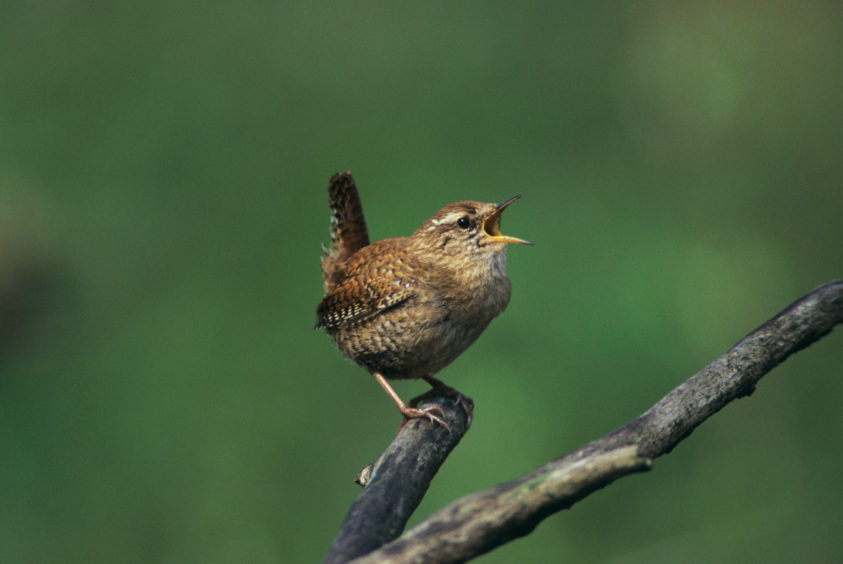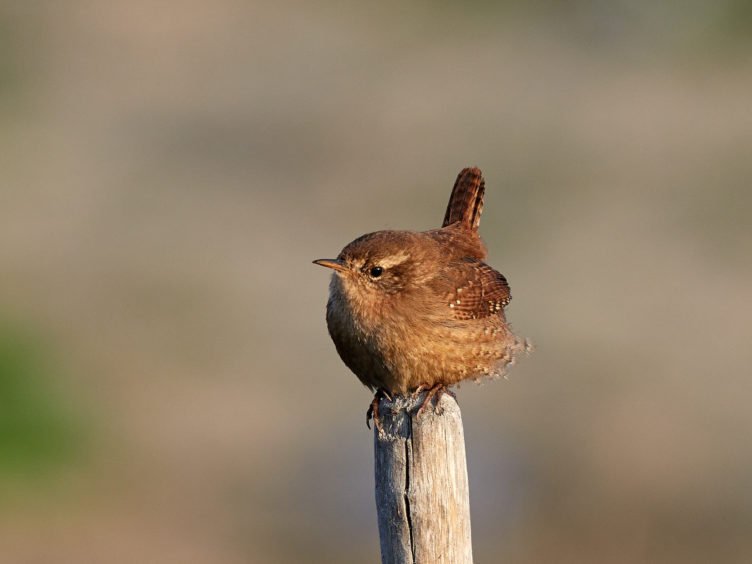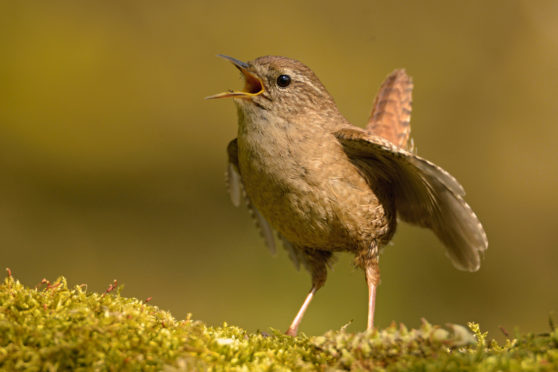Due to their reliance on small invertebrates for food, wrens are vulnerable to extremely cold spells of weather when the population can plummet, although numbers usually bounce back quickly.
A cold January morning on Alva Moss in the Ochils, and apart from a wind-tumbled raven that had flashed above me on swirling wings, little animal life was around.
This upland moss was undeniably bleak at first glance: boggy, flat and featureless. But experience has told me to dismiss initial impressions of such places, for the landscape is only a veneer, and once you delve deep, nature’s riches will soon sing out at you.
And, that is exactly what happened: a brown flickering movement by the lip of a peaty over-hang, and then a flurry of tiny wings. It was a wren, looking so diminutive and fragile in this harsh environment, and behaving more akin to a mouse than a bird as it crept about investigating nooks and crannies for tiny invertebrates.

Whilst principally a bird of gardens, woods and hedgerows, wrens also frequent moorland, especially along mountain burns. They even occur on high ground in winter, feeding safely beneath the snow, scurrying and flitting in amongst twisted stems of heather. The wren’s world is often a dark one; an avian cave dweller as reflected by its scientific name, Troglodytes.
But there is much more to the wren than its environmental adaptability. The male is a bird of considerable passion, and in spring he puts every ounce of energy into finding a mate, delivering his song with such power and ardour that his wings and tail vibrate uncontrollably.
His endless efforts to impress a female are also displayed by his construction skills, where he builds several intricately weaved nests. These ball-shaped masterpieces are sometimes situated in a bush, but more typically in a crevice in a wall, or amongst the roots of an up-ended tree.
The female will then cast a critical eye over each nest and the one that meets with her approval is lined with feathers in preparation for egg laying. Whilst such endeavours result in a considerable expenditure of effort on the part of the male, the plus side is that his nests may attract more than one female to mate with.

Another fascinating facet are the different island races found in Scotland, which have evolved as a result of their sedentary habits. The wrens on Shetland, Fair Isle and the Outer Hebrides are all sub-species from their mainland cousins due to slight variances in size, plumage and marginally different songs. With a population of only around 30 or so pairs, the Fair Isle wren has the dubious distinction of being one of the world’s least numerous type of bird.
I watched this wren on Alva Moss for a while longer, before it whirred away on stumpy wings to seek out some other dark recess in its ever constant quest for food. The wind was picking-up and grey clouds loomed on the horizon, blurring out the distant peak of Ben Ledi: rain was approaching, and it was time to head for home.










